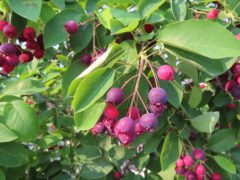
Allegheny serviceberry
Amelanchier laevis
A small, deciduous, usually multi-trunked understory tree or tall shrub which is native to thickets … Continued
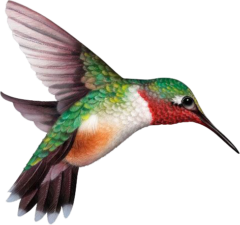 Hummingbirds, bees and butterflies are well-known pollinators, but there are thousands of unsung pollinator heroes, including moths, wasps, flies, and beetles, many mammals, birds, and reptiles, who also take on the job.
Hummingbirds, bees and butterflies are well-known pollinators, but there are thousands of unsung pollinator heroes, including moths, wasps, flies, and beetles, many mammals, birds, and reptiles, who also take on the job.
Pollinators move from plant to plant, fueling up with pollen and nectar from blooming trees, shrubs, perennials, annuals, vegetable plants, and herbs. As they move, the pollinators transport and deposit pollen, fertilizing plants and allowing them to reproduce.
Pollinator plants can be native and non-native, but not all flowering plants are equal when it comes to providing the highest quality protein-rich pollen. Many hybrids don’t even produce pollen at all. The following list includes pollen-rich plants to include in your garden to provide pollinators with food.
Local butterfly expert Lenora Larson has created these informational handouts. You can download them here!
• Butterflies: Flying Flowers in your Garden!
• A Vital Connection: Native Plants and Butterflies
• Long Lips Farm Caterpillar Foodplants
• Butterfly Bartending: Nectar Flowers
• Long Lips Farm: Selected Butterfly Nectar Flowers
• Bee Friendly: Plants for Bees and Other Pollinators
Since 1970 the population of North American birds has dropped nearly 30% — almost three billion birds have vanished from our forests, grasslands, and backyards in less than a human lifetime. It’s a chilling fact that makes it clear that we must act as individuals to help ensure their survival.
Most importantly, ninety-six percent of all terrestrial bird species rear their young on insects so it is also important to grow plants that feed insects to provide a well-rounded habitat in your garden.
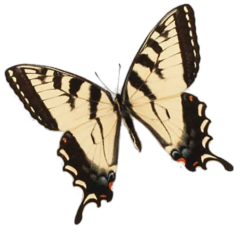

Amelanchier laevis
A small, deciduous, usually multi-trunked understory tree or tall shrub which is native to thickets … Continued
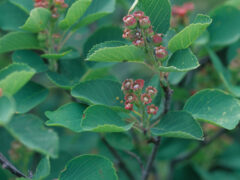
Amelanchier alnifolia 'Obelisk'
Round leaves change to reds and orange in fall. Ornamental berries provide food for songbirds. … Continued
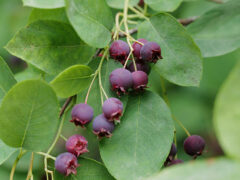
Amelanchier arborea
This four-season tree offers white flowers in spring, small red berries in summer, colorful fall … Continued
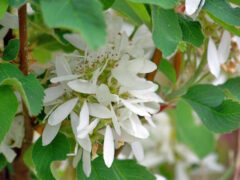
Amelanchier alnifolia
Prefers full sun and requires minimal attention. Blue-green foliage, delicate 2” flower clusters and brilliant … Continued
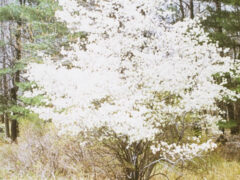
Amelanchier canadensis
Deciduous, early-flowering, large shrub or small tree typically grows 15-30’ tall. Showy, 5-petaled, slightly fragrant, … Continued
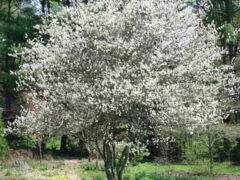
Amelanchier x grandiflora 'Autumn Brilliance'
Grown as a shrub or small tree for its brilliant orange-red fall color and disease … Continued
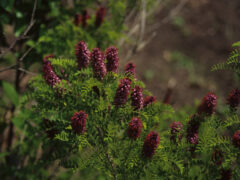
Amorpha nana
Bright green leaves are topped by showy purple flowers with bright red stamen that give … Continued
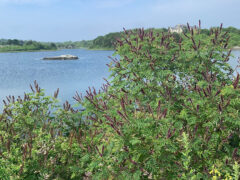
Amorpha fruticosa
A large, airy shrub that forms dense thickets in its native habitat. Six-inch purple flower … Continued
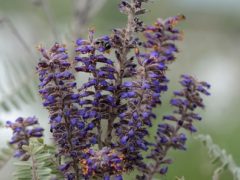
Amorpha canescens
This native shrub grows in woodlands and prairies. 4-8″ spike-like clusters of tiny, bluish-purple flowers … Continued
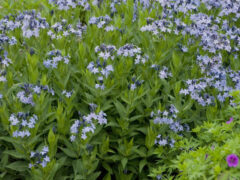
Amsonia tabernaemontana ‘Blue Ice’
Gorgeous navy blue buds in late spring open to vivid periwinkle blue, star-shaped flowers larger … Continued
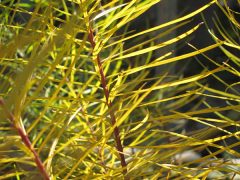
Amsonia hubrichti
Perennial Plant Association 2011 Perennial Plant of the Year! Pale blue flowers cover fine-needle-leaved, dense, … Continued
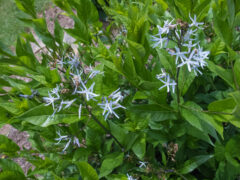
Amsonia tabernaemontana
Large, multi-stemmed clumps are crowded with narrow, oval leaves which turn golden-yellow in the fall. … Continued